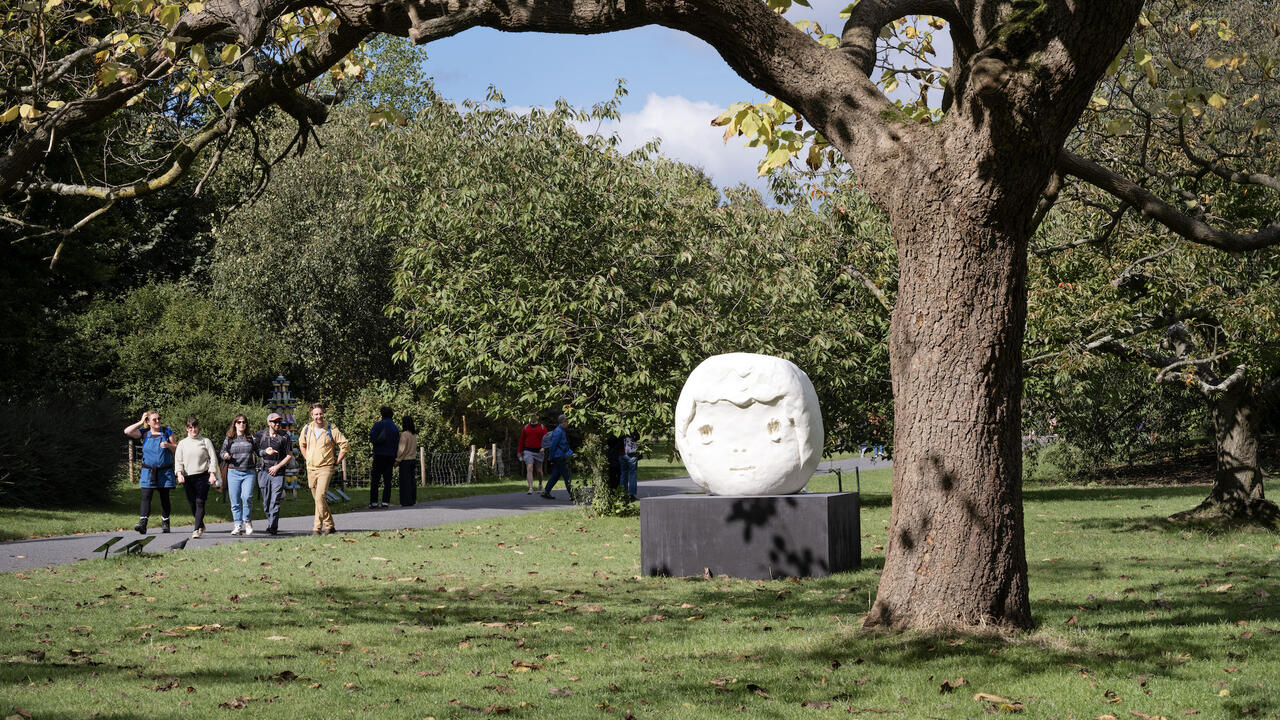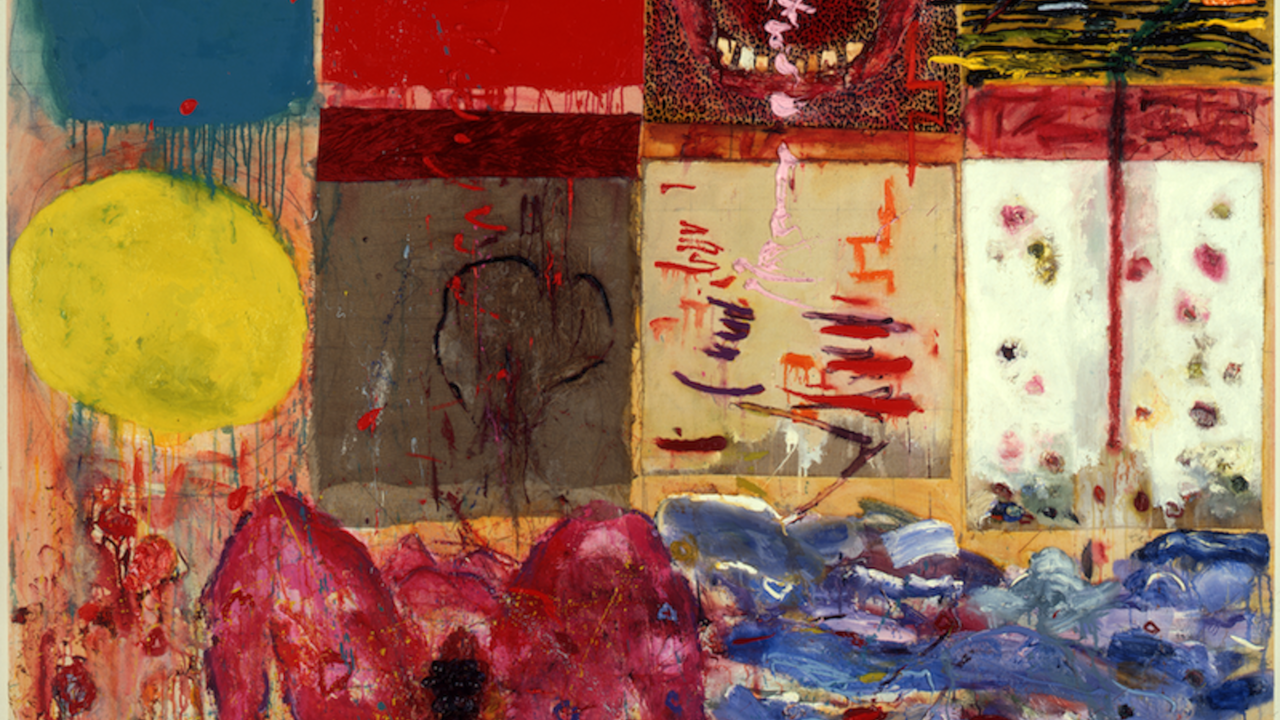Claudia and Julia Muller
Galerie Peter Kilchmann, Zurich, Switzerland
Galerie Peter Kilchmann, Zurich, Switzerland

You could be forgiven for thinking that the art of Claudia and Julia Müller must have its roots in the games the two sisters played in their childhood. For years they have been collecting images from magazines, snapshots of their friends, and old postcards and photographs - other people's souvenirs and holiday pictures - bought at flea markets. They then make tracings of these images, producing a collection of strangely neutral and detached drawings that form the core of their work.
Since the early 1990s - from their first realistic drawings of friends and relatives, to Random Signs (2000), which includes postcards of faraway lands, and more personal images of intimacy and abstraction - their work has evolved into an increasingly deliberate investigation of a world reified by representation. The central piece of this show, Zoo (2001), was a large wall painting based on a snapshot of an 'Exhibition of Animals and People' taken at Basel Zoo by a visitor in 1962. A group of Senegalese villagers wearing traditional costumes are pictured facing the camera, herded into a pen-like enclosure. Behind them are white visitors dressed in suits. The Senegalese are smiling but their faces are indistinct, almost as if they have been worn out by being stared at for too long. It is an image of colonial violence and exploitation transformed into a souvenir by an amateur's camera lens. The full drama of this particular case of historical misrecognition is restored by the fact that the wall painting, like most of the drawings in the show, is executed in a sepia-coloured wash, with all the attendant connotations of complacent nostalgia.
Masks, disguises, folk paraphernalia and elements of 'local culture' abound in this exhibition. One drawing, Mystery Play (2001), depicts a woman in a traditional Swiss peasant costume sitting at a table with a vacantly grinning boy wearing lederhosen. Behind them is another woman wearing a white veil, and hooded figures who could be a folk version of the three wise men. The drawing has the stilted and slightly kitsch feel of something in a waxwork museum. Another, Sylvester (New Year's Eve, 2001), depicts a couple wearing masks at a party, but the lack of depth of field makes it impossible to distinguish between the masks and the characters' faces. One of the most interesting features of these scenes is how profoundly inauthentic they appear. Swiss folklore, in the hands of Claudia and Julia Müller, appears as artificially exotic as the Senegalese villagers in Basel Zoo.
In 'Unpacking My Library' (1931), an essay about his book collection, Walter Benjamin pointed out the affinities between the child and the collector: 'among children, collecting is only one process of renewal; other processes are the painting of objects, the cutting out of figures, the application of decals - the whole range of childlike modes of acquisition, from touching things to giving them names.' Benjamin could not have foreseen a world in which spectacle would become so overwhelming. In the Müller's outlined images all that is left is the trace, the distant reminder of that possibility for childlike immediacy.
























